|
Index...
|
 he Whitefriars Gatehouse, Much Park Street, most know it as the "Old Toy Museum". The building dates back to 1352 and was built as the main entrance to serve the huge Carmelite Whitefriars Monastery on a site specially purchased for the purpose by William Luffe from John Box. As a gateway - and it was the only way in and out of the walled grounds - the narrow lane through the gatehouse used to run to the inner gate of the friary. Originally taller than the present gatehouse, it had two statues above the entrance, probably the Virgin and St. Peter, and was facing onto Much Park Street, one of the main roads into the city from London Road having come through the City Wall at New Gate.
he Whitefriars Gatehouse, Much Park Street, most know it as the "Old Toy Museum". The building dates back to 1352 and was built as the main entrance to serve the huge Carmelite Whitefriars Monastery on a site specially purchased for the purpose by William Luffe from John Box. As a gateway - and it was the only way in and out of the walled grounds - the narrow lane through the gatehouse used to run to the inner gate of the friary. Originally taller than the present gatehouse, it had two statues above the entrance, probably the Virgin and St. Peter, and was facing onto Much Park Street, one of the main roads into the city from London Road having come through the City Wall at New Gate.
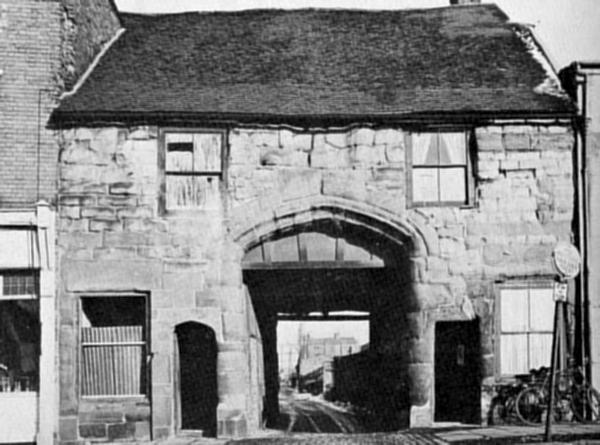
With King Henry VIII's dissolution of the monasteries the gatehouse escaped destruction, and along with the remaining parts of the Whitefriars buildings it became the property of John Hales, whose responsibility it was to knock down the Priory of St. Mary's and all the other Monasteries in the city. The Hales family lived here for almost two hundred years. While the main Whitefriars building was the property of John Hales, Queen Elizabeth I and her royal party would have had to pass through this gateway when she visited Hales in August 1565.
After 1722 the building changed hands several times until, in 1801, the Directors of the Poor for Coventry acquired the remainder of the Whitefriars buildings for a Workhouse and the Gatehouse was converted into two houses. As was normal at that time, the occupants used their house for their business's many purposes, including weavers, butchers, drapers and coal merchants. At the beginning of 1900 it came into the hands of a well-known Coventry character, Zachariah Peach, who used it as a second-hand clothes shop specialising in boots. After his death in 1936 the buildings stood empty, and after the war Coventry was in a bad state. The gatehouse had survived most of the bombing in the war but it was boarded up with corrugated tin. For many years it deteriorated so fast that it was in danger of collapsing. When Ron Morgan found out that the gatehouse was the property of the City Council they gave him permission to live and work there on the condition that he restored it. He carried out the renovation work himself, and in 1962 he moved in.

Ron Morgan had come to Coventry after the war from Liverpool to work in Coventry's growing car industry, and he took up lodgings in the Chace Hostels along the London Road. It was here that he joined the local Willenhall Labour Party who met at the hostel's canteen. This is where he met my wife's family, and especially her mother, Betty Healey, who was the election agent for Richard Crossman, M.P. and Health Minister. Ron worked for the Rootes car company but his main passion was to become an artist potter. So, when he saw that the Whitefriars gatehouse was run down he enquired about 'doing it up' and using it for a studio and workshops on the ground floor, and for him and his wife Muriel to live upstairs.
There is a lovely 16m silent film taken of Ron and Muriel entertaining friends inside the Whitefriars gatehouse. Later you can see them outside the building and you will see how many buildings were still standing in Much Park Street. See the film on YouTube.
I first got to know Ron through my friend and neighbour Barry Bowerman. One day he took me to see his sister Sonia, who was working as a sales assistant at Ron's studio in the Much Park Street gate. Barry was always very excited about things and wanted to show me the amazing gatehouse and its history and how Ron had put new life into it. Barry was an engineering apprentice at the Courtaulds company, but he gave it all up to be an actor. He got various acting jobs in London and on BBC's Jackanory, and almost had a big break playing the role of Archangel Gabriel in Zeffirelli's Easter epic film "Jesus of Nazareth". Barry spent two weeks filming in Morocco, but his scene was cut!

 on and his first wife Muriel separated and got divorced, but Ron then married Sonia, with whom he had two sons, Jan and Luke. My girlfriend Sara (now my wife) and I would baby sit for them in the comfortable living quarters above the workshop while Ron and Sonia attended council civic events and dinners. Ron was very interested in Coventry's heritage and campaigned for many old buildings to be saved. The first success was the campaign to save Kirby House in Little Park Street in 1970, and Ron set up the Coventry Civic Amenity Society (my wife and I were among the first to join). Much later the name was shortened to the Coventry Society.
on and his first wife Muriel separated and got divorced, but Ron then married Sonia, with whom he had two sons, Jan and Luke. My girlfriend Sara (now my wife) and I would baby sit for them in the comfortable living quarters above the workshop while Ron and Sonia attended council civic events and dinners. Ron was very interested in Coventry's heritage and campaigned for many old buildings to be saved. The first success was the campaign to save Kirby House in Little Park Street in 1970, and Ron set up the Coventry Civic Amenity Society (my wife and I were among the first to join). Much later the name was shortened to the Coventry Society.
Ron was always a campaigner - he became a Labour councillor for Binley and Willenhall ward in 1971 and throughout the 1970s and 80s. At the same time he was still working as a potter making various pots and sculptures - he even set up a small sales booth to sell his pots and other Coventry souvenirs. This was next to the Old Gulson Central Lending Library by the open-air Festival Cafe, next to the old County law courts opposite Holy Trinity Church. Ron has many pots and other exhibits in the Herbert Art Gallery and Museum, and he was Chairman of Libraries, Arts and Museums in the 1970s.
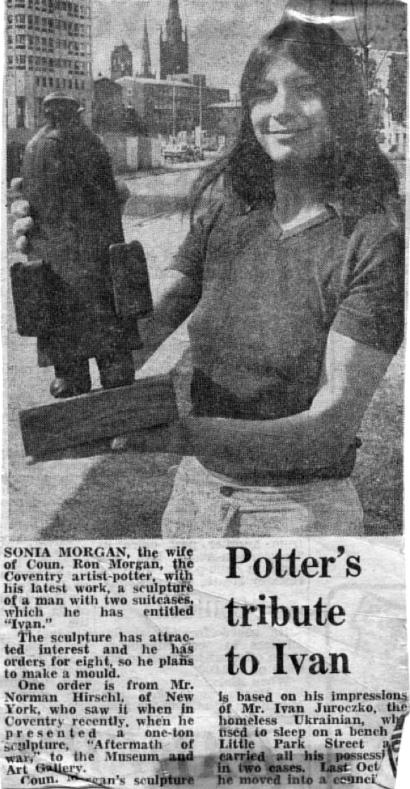
The building next to the gatehouse was a shop, and had a workshop behind it which would once have been a weaver's or watchmaker's workshop. When it was threatened with demolition Ron saved it, and he was able to add it to the property as an exhibition studio. A doorway was knocked through from the gatehouse's spiral staircase into the workshop area at a height that allowed a short flight of stairs to go up to the first floor and one down to the ground.
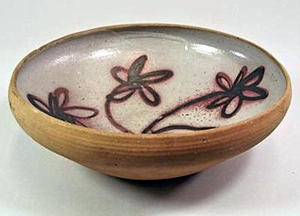
First Ron exhibited his pots, then he had touring art exhibition in this studio, but the sad fact was that though the Whitefriars gallery was only just down the road from the Herbert Art Gallery, it did not get many visitors, especially as the touring artists who were exhibiting were hoping to sell their paintings.
Ron's lifelong love of children's toys led to him opening the property as a Toy Museum, and over the years he proudly showed off his collection to thousands of school children. He began his collection after realising how many handcrafted castles and doll's prams were being lost in an emerging world of plastic. He used to tell me "I've been lucky, I have been able to be a kid all my life. Every week I go out and buy a new toy." His greatest find was while on holiday with Sonia and the two boys. It was a rainy day and they were in a seaside town, and they called into an old toy shop off the beaten track. Ron said it was amazing, he noticed some old toys on sale and got talking to the shop owner and asked if they had any other old type toys? He was taken into the rear store-room which was full of amazing old toys still in their boxes, but that no-one wanted any more - but Ron did. He spent all the rest of the holiday money and they went home early with a camper-van loaded with toys. He visited this old toy shop many times but would not let people know where it was - he always kept it a secret!
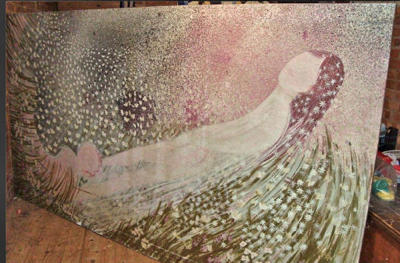
Ron's two sons both became artists and went to Coventry University. Jan worked as a designer for a toy manufacturer, but later he and his wife made hand-puppets and sold them in Covent Garden, mainly to rich American tourists. They both gave up their jobs and produced as many as they could.
The first hand-puppet was based on Zachariah Peach (see photo of the puppet), who had lived in the Whitefriars Gatehouse - he looked very scary. When Jan was selling them he would have a large jacket on, with one arm not down the sleeve and a false hand at the bottom. When he was calling to the passing people, he would pop the Zachariah Peach puppet character out of his jacket by his head or neck. Pretending not to notice he would carry on talking, and when anyone tried to tell him about the puppet it would hide and pop out in a different place! This would draw a small crowd and they would sell loads of them.

The puppets were presented in nice cardboard boxes with a short history of Zachariah and how he lived in Medieval Coventry and would look after the city gate. Jan designed another four characters, each with their own names, and made up medieval jobs for them; they all looked scary like church gargoyles. Because they were making and selling them, cutting out the middle man, they made a lot of money and were able to buy a house with cash.
His other son Luke and his wife both taught art to school-teachers at the Coventry Teaching College. Luke became a very popular artist and sold works in America. They live in France now, near his mother. Ron's marriage to Sonia had ended in the 80s and she later went to live in France.
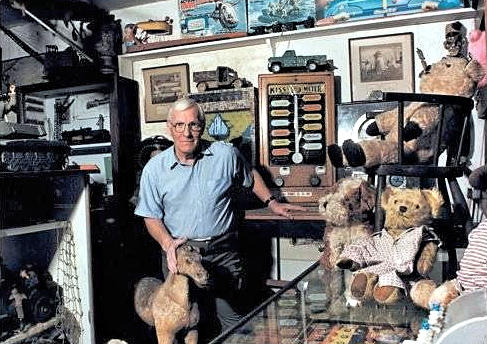
 on carried on living in the gatehouse on his own, but due to ill health he had to have his right leg amputated below the knee. His doctors said it was due to his life-long smoking. As a wheelchair user he was passionate about disabled access, and had asked many times for dropped kerbs to be installed around the city, but the council did not do it. So, in 2003, he was so fed up with having to struggle up pavements in the city centre that he created his own ramps and kerbs. Ron armed himself with bags of molten asphalt, set out in his wheelchair, and dumped them unceremoniously on the offending kerbs, tamping them down with a makeshift thumper, which is amazing considering he did it while still in his wheelchair! This is what you call direct action, and it soon got the city council to add dropped kerbs around the city. His guerrilla action earned him a few dire warnings but it shamed the council into action.
on carried on living in the gatehouse on his own, but due to ill health he had to have his right leg amputated below the knee. His doctors said it was due to his life-long smoking. As a wheelchair user he was passionate about disabled access, and had asked many times for dropped kerbs to be installed around the city, but the council did not do it. So, in 2003, he was so fed up with having to struggle up pavements in the city centre that he created his own ramps and kerbs. Ron armed himself with bags of molten asphalt, set out in his wheelchair, and dumped them unceremoniously on the offending kerbs, tamping them down with a makeshift thumper, which is amazing considering he did it while still in his wheelchair! This is what you call direct action, and it soon got the city council to add dropped kerbs around the city. His guerrilla action earned him a few dire warnings but it shamed the council into action.
In 2006 he had to have his other leg amputated but he still kept the museum open, although only from noon till 5pm, but entrance was free with only a donation box. Ron only leased the museum building, which was also his home, but he personally owned the vast collection of old toys. He offered them all to the City of Coventry, asking them to run the museum, but they turned it down saying it would cost too much to look after. It was claimed that it would cost the wages of three staff to run the Toy Museum, even though Ron had been able to run it himself with no legs!
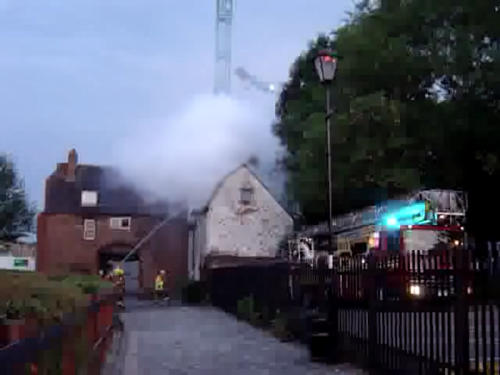
Ron died in 2007 aged 82. For 45 years he had lived in this medieval gatehouse and he was still running the Toy Museum. His two sons were given two weeks to get all the toys and furniture out of the gatehouse. They tried to give them to the Herbert but were turned down. Some of the toys and furniture was sold but most are now in France with his family. The building was boarded up and two years later the back part of the museum was set on fire. It has since been repaired but the first floor has not been replaced. It used to have two rows of north-lit windows but an entrance doorway with a shutter has been added. Maybe they were hoping to make this area into a cafe or restaurant?
A short film was produced by some Coventry Art Students who set up their own small company called Blue Strawberry Productions in 2006. It shows the two floors of the museum, plus the entrance from the front of the building. You would go up a short flight of spiral stairs, then half way up you go into the building at the back. It would open onto a landing with steps going up and steps going down to the ground floor. After the fire only the steps to the ground floor were rebuilt and they did not put in the second floor. See this interesting film.
So, what is its future? As of 2022 it has been passed over to the Historic Coventry Trust, who are also looking after the Charterhouse, Drapers' Hall, and many other historic buildings in the city. The plan is to make it into two holiday lets for visiting tourists, with other studio flats next to it on both sides. The back of the museum building is to be commercial lets for business or catering.
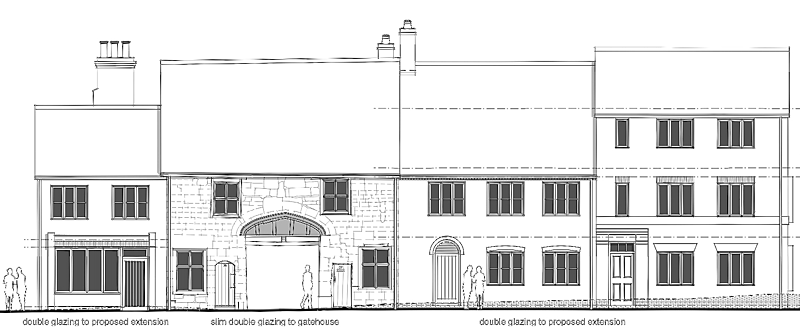
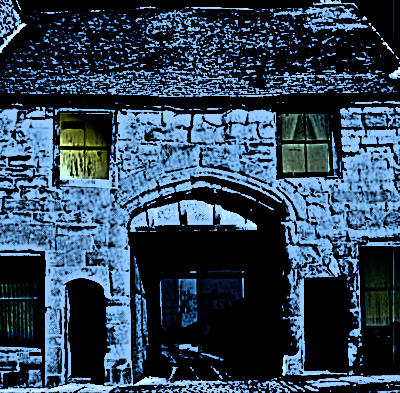
 t is reported by local historian David McGrory that Charles Dickens visited Coventry many times and used the gatehouse in his book The Old Curiosity Shop. Charles remembered passing it one moonlit night, and wrote:
t is reported by local historian David McGrory that Charles Dickens visited Coventry many times and used the gatehouse in his book The Old Curiosity Shop. Charles remembered passing it one moonlit night, and wrote:
"The moon was shining down upon the old gateway of the town, leaving the low archway very black and dark; and with a mingled sensation of curiosity and fear, she (Little Nell) slowly approached the gate, and stood still to look up at it, wondering to see how dark, and grim, and old, and cold, it looked.
There was an empty niche from which some old statue had fallen or been carried away hundreds of years ago, and she was thinking what strange people it must have looked down upon when it stood there . . . The street beyond was so narrow, and the shadow of the houses on one side of the way so deep, that he seemed to have risen out of the earth."
Little Nell takes shelter in the darkness of this ancient gateway, the main entrance to the old Whitefriars monastery. Nearby, at the end of Much Park Street, was the city gate known as New Gate (entrance from the London Road, the first gate to be built). This is where Dickens would have seen the gateway while passing by on his way into Coventry in his stage-coach.
Website by Rob Orland © 2002 to 2025